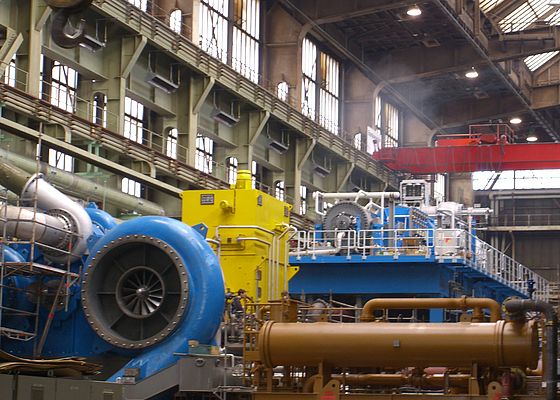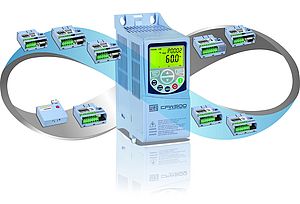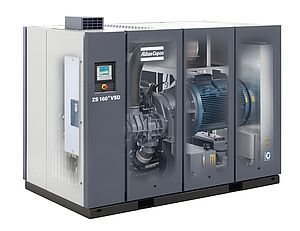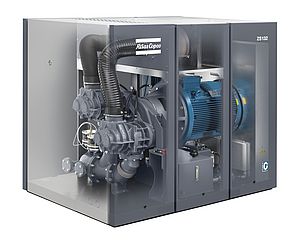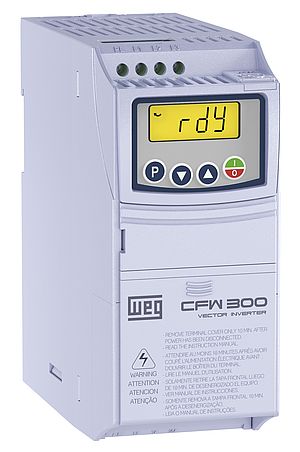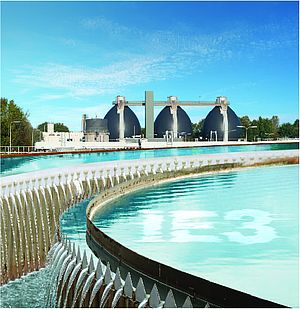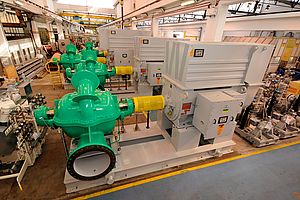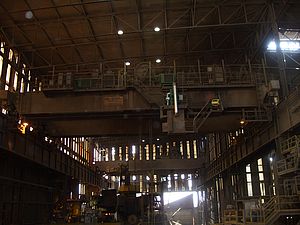A 45-tonne, 14,000kW, 10,000V high voltage slipring motor is used for the testing of huge radial, axial, and geared compressors at MAN Turbo AG’s Oberhausen plant.
Designed and manufactured to exacting customer specifications, the ‘M’-Line slip ring motor is special due to its highly robust design, which enables it to withstand the rigours of movement around the test area, by cranes and lifting tools, and yet still provide reliable operation under severe test conditions. In addition, the motor has two conical shafts, allowing the connection of steam turbines or expanders to the second shaft end, raising its mechanical transfer rating to 20,000 KW.
Initially, MAN Turbo AG was reluctant to place such a strategically important order for a test motor with a company it knew little about. However Weg was able to demonstrate its global manufacturing and supply credentials to the Oberhausen-based company, and this resulted in a climate of trust being established with technical personnel. In addition, key personnel from MAN Turbo also visited the test bed facility of Sulzer Pumps, in Leeds in the UK, - where Weg had supplied a similar but lower power slipring motor - and talked with the test field managers there to determine their experiences with the motor.
In addition to the facility for the year-long test programme, and the favourable outcome from the Sulzer visit, the third determining factor in MAN Turbo’s decision to specify this slipring motor was that the manufacturer is one of only three companies worldwide with the know- how to design a special machine that would satisfy MAN Turbo AG’s exacting specification.
The largest motor ever built by the provider is a slipring machine; it is used in a wind tunnel for testing aircraft at high MACH numbers. This motor, a 27,000kW, 12-pole, 11kV machine, is 7-metres long by 5-metres wide and weighs over 93 tonnes. The increased power required for its operation meant that it needed its own 132kV grid connection. A total solution based was provided around this requirement, by supplying a 35MVA 11kV/132 kV transformer with auto-tap changer, allowing the client to reduce his total installation costs substantially.
The MAN Turbo motor is also substantial; a force- cooled unit, rated S1-100% 14,000 KW at F/F rise, from 1500rpm down to 750 rpm, it weighs in at 45- tonnes. Motors of this size are usually fixed and operate continuously under normal conditions. However, this is not the case with the MAN Turbo motor; the 45-tonne machine has to undergo the rigours of being moved around by cranes and lifting tools, and still performs reliably in the severe and exacting conditions naturally existing in field testing.
A slipring motor was specified by MAN Turbo AG, because the company has experience of this motor type - albeit in the lower power ranges - and has enjoyed satisfactory results with them over many years. Slipring motors are actually ideal for MAN Turbo AG’s test purposes, as they do not suffer from any torque pulsations in their drive train.
The unusual specification of the MAN Turbo slip ring motor is testament to the modular nature of the ‘M’-Line of high voltage motors. The flexible ‘M’ range design enables the motor specification to be tightly tailored to specific customer specifications. The MAN Turbo motor is designed with two conical shaft ends, to facilitate tests in excess of the normal capacity of the motor. In these tests, the second of the conical shafts is attached to a turbine or an additional motor to deliver the additional power, raising the mechanical transfer rating of this motor to 20,000kW.
Speed control of the motor is carried out by a liquid rheostat. This unit has two tanks for part and full load testing. The speed range is 0 to 1500 rpm; with normal operating in the 50% to 100% range, or 750rpm to 1500 rpm. Within this speed range the motor operates with constant torque. The option of a variable speed drive was considered, but discounted, as the investment was much higher, and the possibility of encountering torque problems, which can wreck compressor blades, was also greater.



